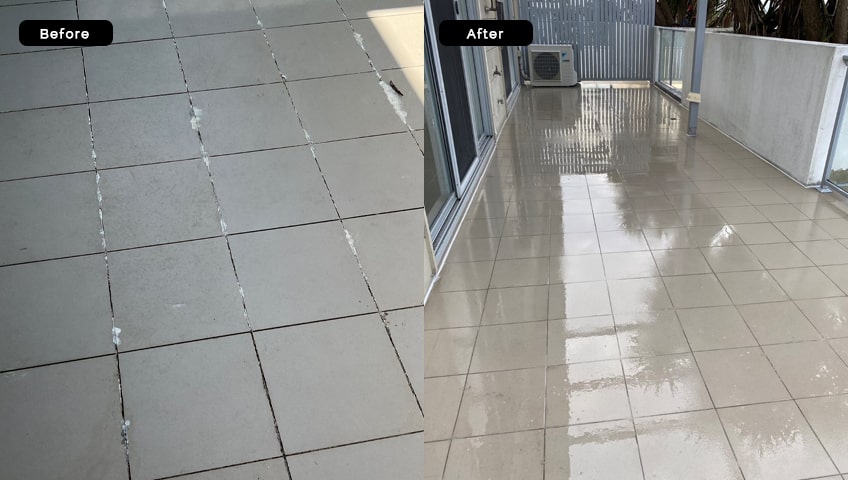How can Efflorescence Treatment Work?
Efflorescence is a common issue that plagues many homeowners and builders. It manifests as white, powdery deposits on the surface of concrete, brick, and other masonry materials. These unsightly deposits not only detract from the aesthetic appeal of your structures but can also indicate underlying problems with your building’s construction. In this article, we will explore what efflorescence is, its causes, and most importantly, how efflorescence treatment works to eliminate this problem and prevent its recurrence.
Understanding Efflorescence
What is Efflorescence?
Efflorescence is a crystalline deposit of salts that forms on the surface of porous materials like concrete, bricks, and natural stone. It typically appears as a white, powdery substance and can be quite stubborn to remove. Efflorescence is not only an aesthetic issue but also a sign of moisture infiltration, which can lead to more significant structural problems if left untreated.
Causes of Efflorescence
Efflorescence occurs due to the migration of soluble salts from within the building material to the surface. Several factors contribute to this migration, including:
1. Moisture
Moisture is the primary driver of efflorescence. Water carries dissolved salts from within the building material to the surface, where it evaporates, leaving the salts behind.
2. Poor Drainage
Inadequate drainage systems around your property can lead to the accumulation of water near your building’s foundation. This excess moisture can increase the likelihood of efflorescence.
3. Subpar Construction Materials
The quality of the materials used in your construction project can also influence the occurrence of efflorescence. Lower-quality materials may contain higher concentrations of soluble salts.
Efflorescence Treatment Methods
Efflorescence is a common issue, but it is not insurmountable. Various treatment methods can help you get rid of efflorescence and prevent its return.
1. Mechanical Removal
Mechanical removal involves physically scrubbing or scraping the efflorescence deposits from the affected surface. This method can be effective for light efflorescence but may not completely eliminate the problem if it’s deeply embedded.
2. Chemical Cleaners
Chemical cleaners specifically designed for efflorescence removal can be highly effective. These cleaners work by dissolving the salts on the surface, making it easier to wash them away. However, caution must be exercised when using chemicals, as improper application can damage the surface.
3. Pressure Washing
Pressure washing involves using a high-pressure stream of water to dislodge and remove efflorescence deposits. It’s crucial to adjust the pressure carefully to avoid damaging the surface. This method is effective for large areas with efflorescence issues.
4. Efflorescence Sealers
Efflorescence sealers are applied to the surface after efflorescence removal to prevent its recurrence. These sealers create a barrier that inhibits the migration of salts to the surface. They can be particularly useful in areas prone to moisture infiltration.
5. Waterproofing
Addressing the root cause of efflorescence, which is often excess moisture, may require waterproofing solutions. This can involve improving drainage, sealing cracks and gaps, and applying waterproof coatings to the affected surfaces.
Preventing Efflorescence
While efflorescence treatment can effectively eliminate existing deposits, preventing its return is equally important.
1. Proper Drainage
Ensure that your property has an efficient drainage system in place to redirect water away from your building’s foundation. This reduces the chances of moisture infiltrating your walls and causing efflorescence.
2. Quality Construction Materials
Invest in high-quality construction materials with lower salt content. This will reduce the likelihood of efflorescence occurring in the first place.
3. Sealants and Coatings
Apply sealants and coatings to vulnerable surfaces to create a protective barrier against moisture and salts. Regular maintenance and reapplication may be necessary to ensure long-lasting protection.
Conclusion
Efflorescence can be a persistent and frustrating issue, but it is manageable with the right approach. Understanding its causes, effective treatment methods, and preventative measures are essential for homeowners and builders alike. By addressing efflorescence promptly and implementing preventive measures, you can protect the integrity and aesthetics of your structures for years to come. If you’re dealing with efflorescence issues, consider consulting with a professional to determine the best course of action for your specific situation.





